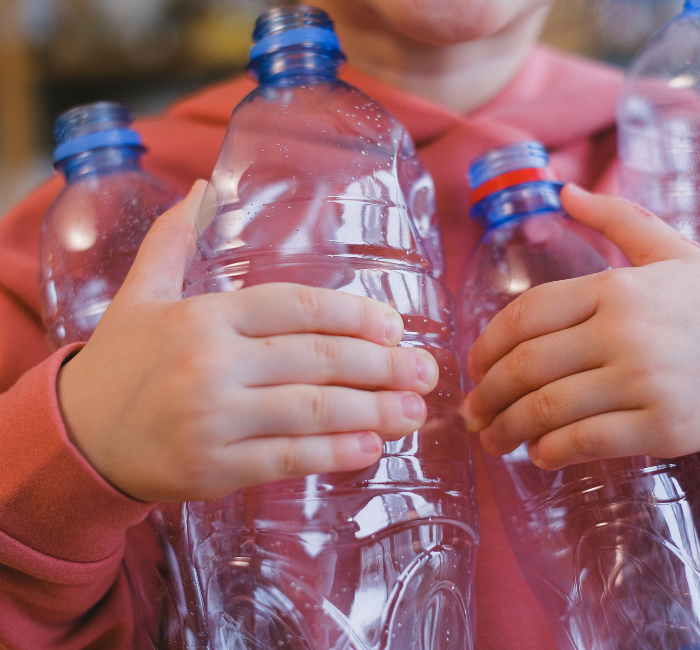If you're using traditional packaging because it seems cheaper or easier, you're not alone. But what often looks like a cost-saving move can quietly drain your resources over time—through waste fees, missed opportunities, and customer churn.
In fact, brands that shifted to sustainable packaging saw a 30% boost in loyalty and a 40% reduction in waste.
This guide walks you through the real impact of unsustainable packaging, and what switching to greener options could mean for your bottom line—and your customer relationships.
True Cost of Unsustainable Packaging

may reduce short-term costs, but it leads to long-term damage through waste fees, regulatory penalties, and lost customer trust. On the other hand, sustainable packaging improves brand reputation, reduces operational risks, and attracts eco-conscious consumers.
Businesses investing in eco-friendly materials and transparent practices often benefit from customer loyalty, cost savings, and future-proof operations.
Hidden Financial Costs
Unsustainable packaging refers to materials and practices that harm the environment, such as single-use plastics, non-recyclable materials, or excessive packaging. These may appear cheap, but they come with less visible expenses that add up fast.
1. Waste Management and Disposal Fees
Non-recyclable or non-compostable packaging usually ends up in landfills. The cost of waste disposal services and landfill taxes can be substantial, especially for large-volume businesses. Some cities are even beginning to pass disposal costs directly to producers (source: EPA).
2. Regulatory Fines and Compliance Pressure
Governments around the world are tightening packaging regulations. If your packaging doesn't meet recycling or material-use standards, you could face steep penalties or be forced to make rapid changes that disrupt operations (source: EU Packaging Regulations).
3. Declining Consumer Lifetime Value
A growing number of buyers factor sustainability into purchase decisions. If your brand ignores this shift, it may struggle to retain eco-conscious consumers—losing repeat purchases and long-term loyalty.
Brand Risks That Don’t Show Up in the Budget
Lost Trust and Negative Perception
Consumers expect brands to take responsibility. Brands still using unsustainable packaging may be perceived as careless, outdated, or profit-driven at the expense of environmental health.
Social Backlash and Bad Press
One viral video or online complaint about wasteful packaging can spread fast and damage brand perception. Customers may call out brands publicly, leading to long-term trust issues and media scrutiny.
Missed Innovation Opportunities
Eco-friendly packaging pushes companies to rethink design and materials, often leading to more efficient logistics and creative product presentation. Brands that ignore this are left behind by forward-thinking competitors.
Long-Term Benefits of Sustainable Packaging

Investing in sustainable packaging is not just ethical—it’s strategic. It enhances operations, deepens customer relationships, and positions your brand to thrive as markets and regulations shift.
Higher Consumer Loyalty
Customers are more likely to stay loyal to brands that show commitment to reducing environmental harm. Green packaging can improve brand perception and trigger emotional buy-in.
Differentiation in a Crowded Market
Most industries are saturated with lookalike offerings. Eco-conscious packaging gives your product a unique edge and appeals to consumers looking for responsible choices.
Reduced Operational Costs Over Time
Though eco-friendly materials may cost more upfront, they often lower costs over time by minimizing waste fees, lowering energy use, and simplifying logistics (e.g., lighter packaging means reduced shipping costs).
Resilience Against Regulatory Changes
When regulations tighten, companies already using sustainable practices won’t have to scramble. They’re future-proofed, while others struggle to adapt or pay the price for lagging behind.
How to Make the Switch: Actionable Strategies
Run a Full Lifecycle Assessment (LCA)
Use data to evaluate your current packaging's environmental impact from sourcing to disposal. This will help you identify the highest-impact changes.
Quick Tip: Free tools like OpenLCA or working with a sustainability consultant can speed up this process.
Use Recycled or Biodegradable Materials
Swap petroleum-based plastics for options like paperboard, sugarcane fiber, or recycled PET. Always check certifications to ensure authenticity.
Quick Tip: Test material performance before full rollout—eco-friendly doesn't mean compromising quality.
Improve Supply Chain Sustainability
Partner with suppliers who prioritize energy efficiency, ethical sourcing, and recyclable packaging formats. Track and reduce carbon emissions across logistics operations.
Make Sustainability Visible to Customers
Packaging isn’t just functional—it’s a marketing asset. Use labels, QR codes, or inserts to explain your material choices and sustainability goals.
Quick Tip: Transparency builds trust. Share your progress even if you're still improving.
Set Up a System for Ongoing Improvement
Sustainability is never “done.” Review packaging KPIs regularly, solicit customer feedback, and stay updated on new materials and recycling technologies.
Ignoring the Problem Comes at a Cost
Let’s be direct: choosing cheap, non-sustainable packaging today can cost your brand market share tomorrow. While others invest in innovation, regulatory resilience, and customer trust, brands that stick to outdated materials will fall behind. Sustainability is no longer optional—it’s the price of long-term relevance.
What We Can Learn from Other Brands
Brands that made the switch years ago—like Patagonia, IKEA, and Lush—have reaped long-term rewards. They built brand loyalty, reduced operational risk, and stayed ahead of tightening regulations. These case studies show that packaging isn’t just a cost center—it’s a strategic lever.
Final Thoughts
Switching to sustainable packaging isn’t about ticking a box—it’s a forward-looking decision that touches every part of your business. From material choices to customer perception, your packaging communicates what your brand stands for.
Don’t wait until regulations or backlash force your hand. Start now, take incremental steps, and build a business that thrives in a world that demands better.